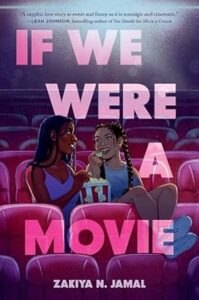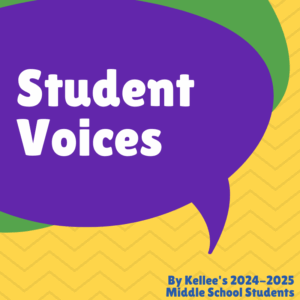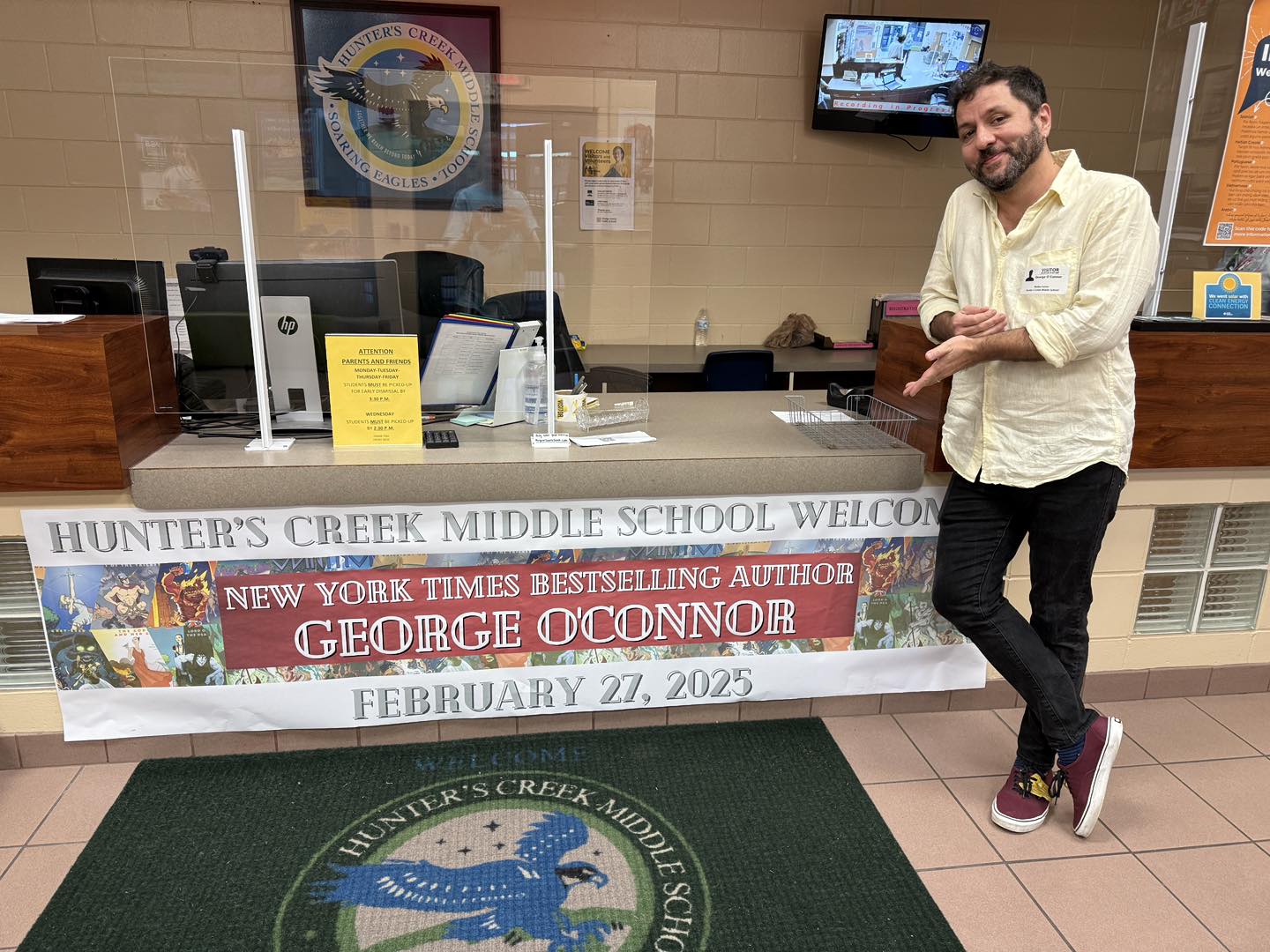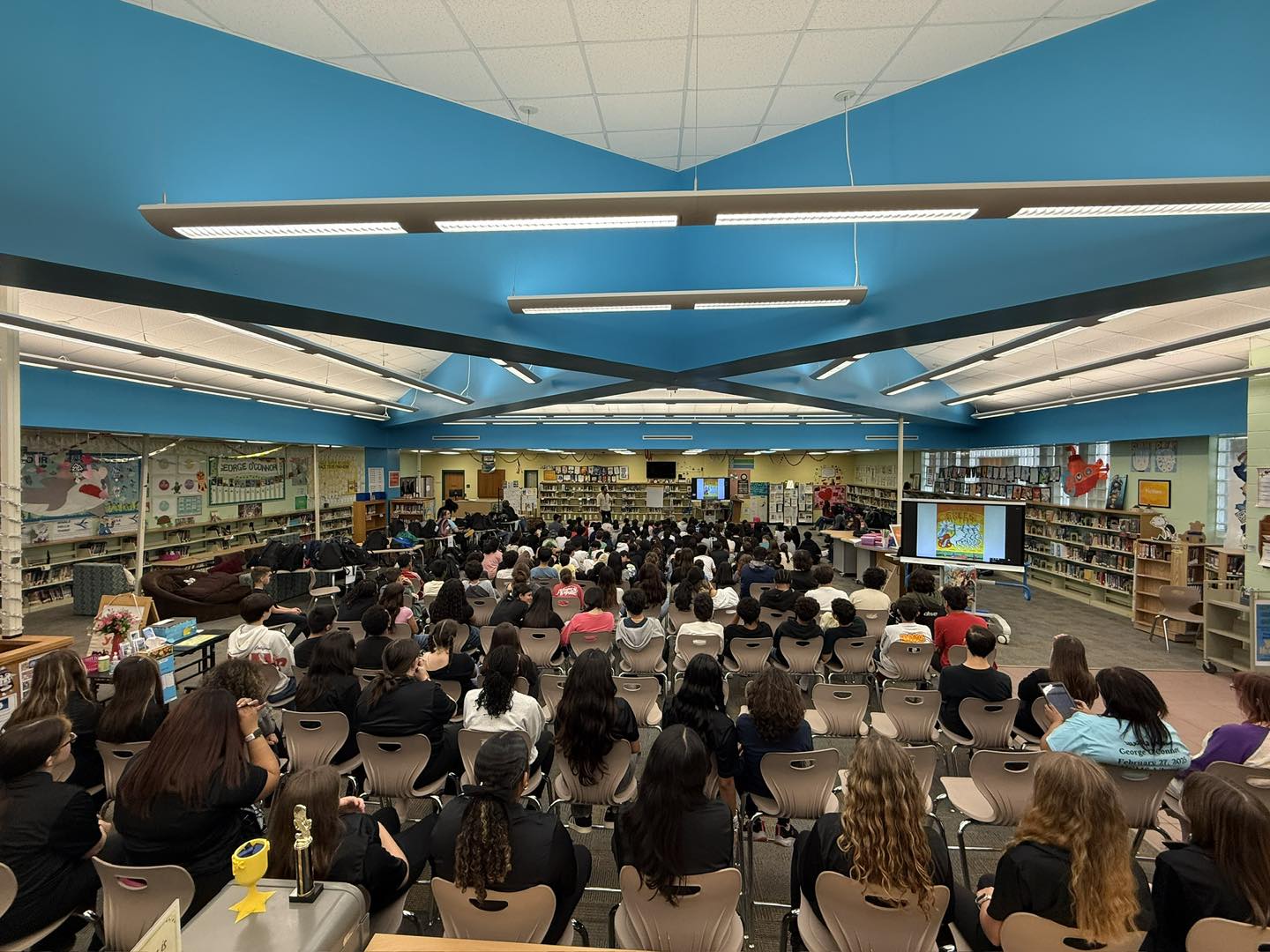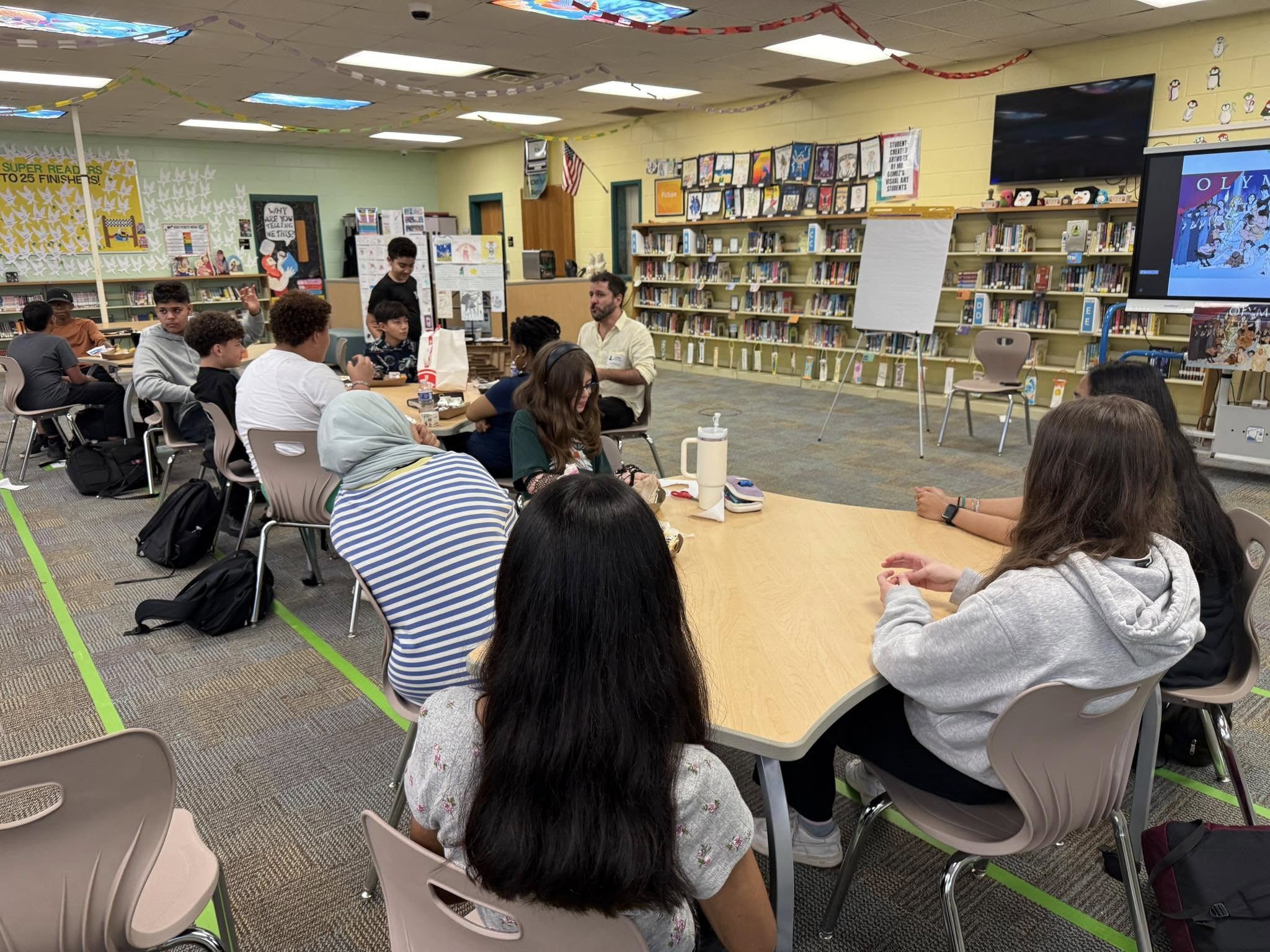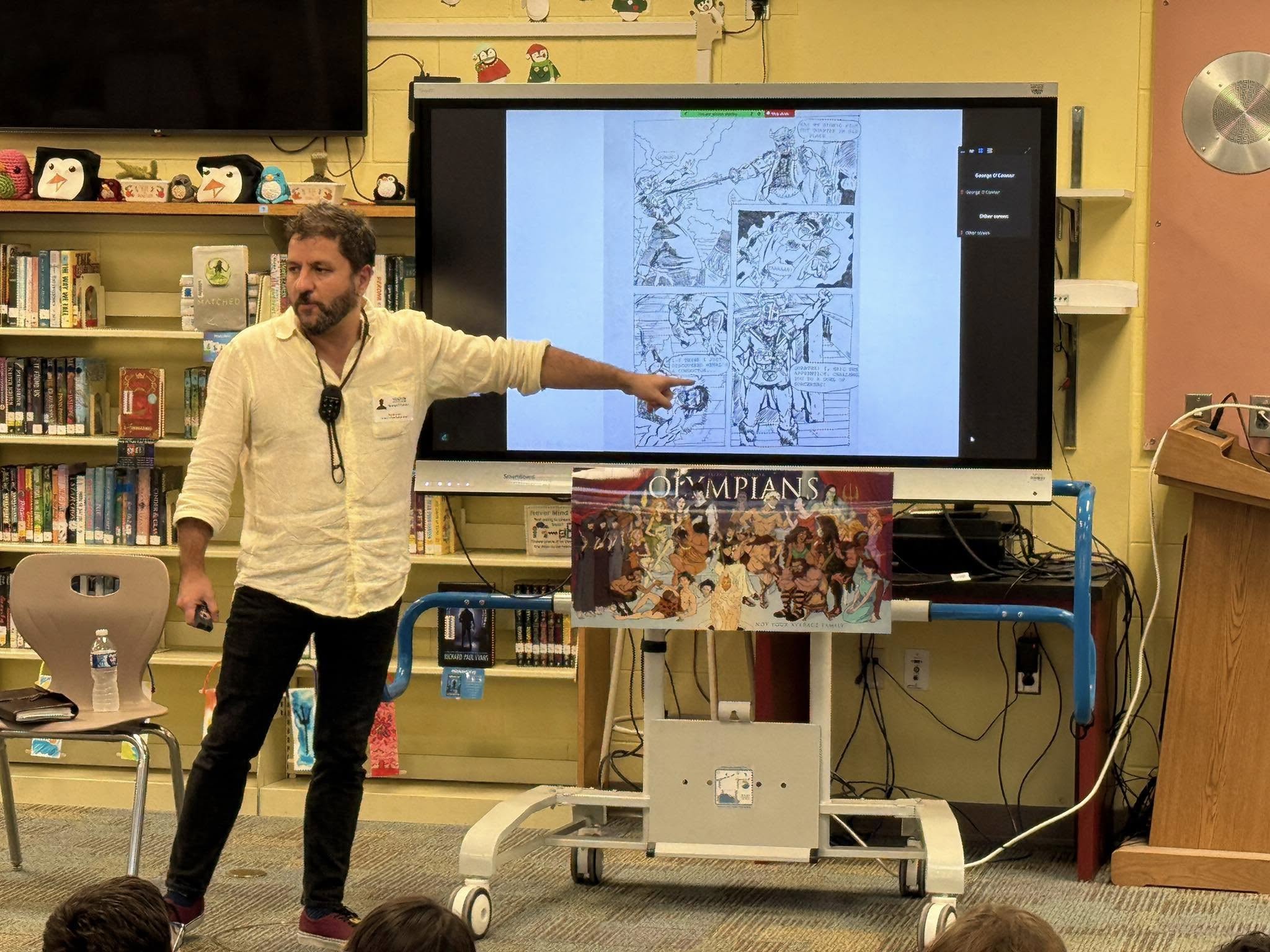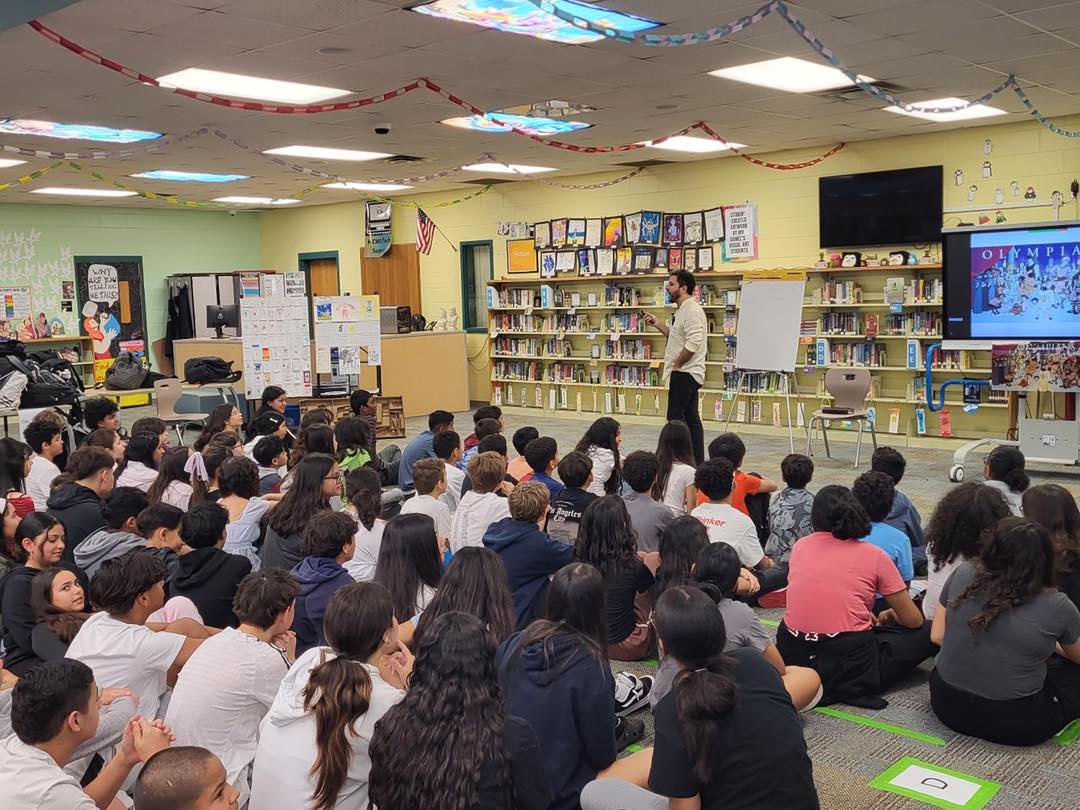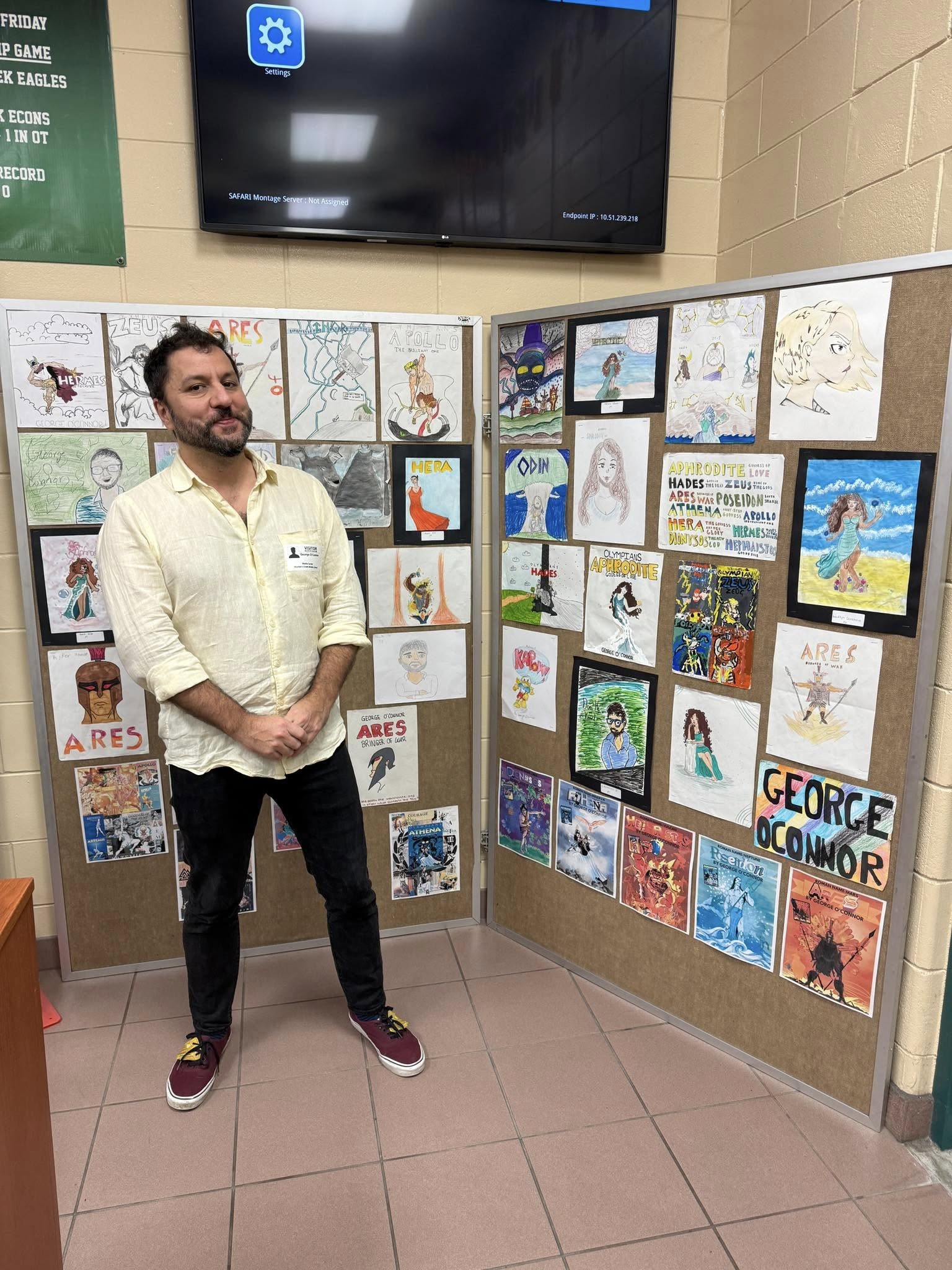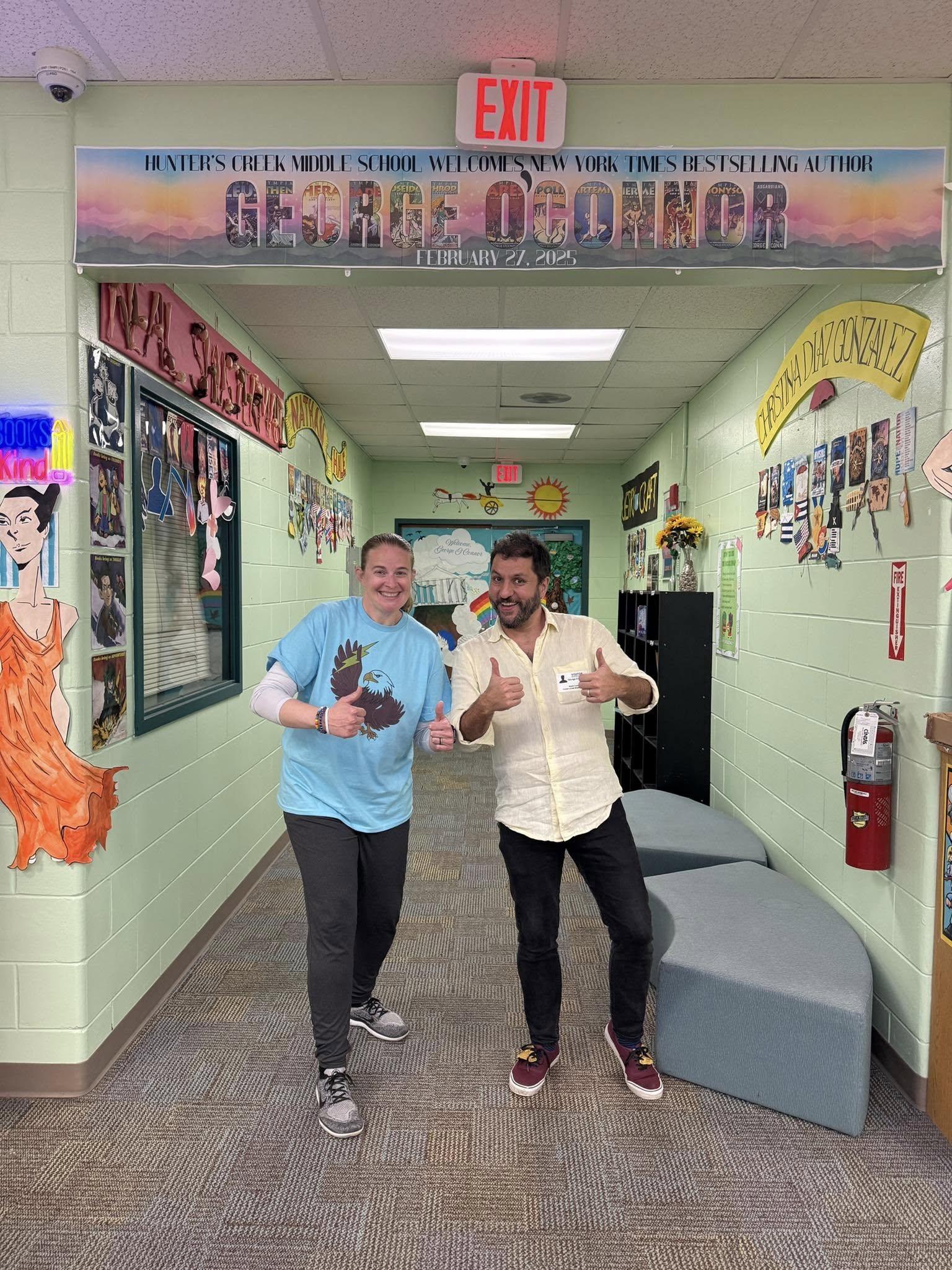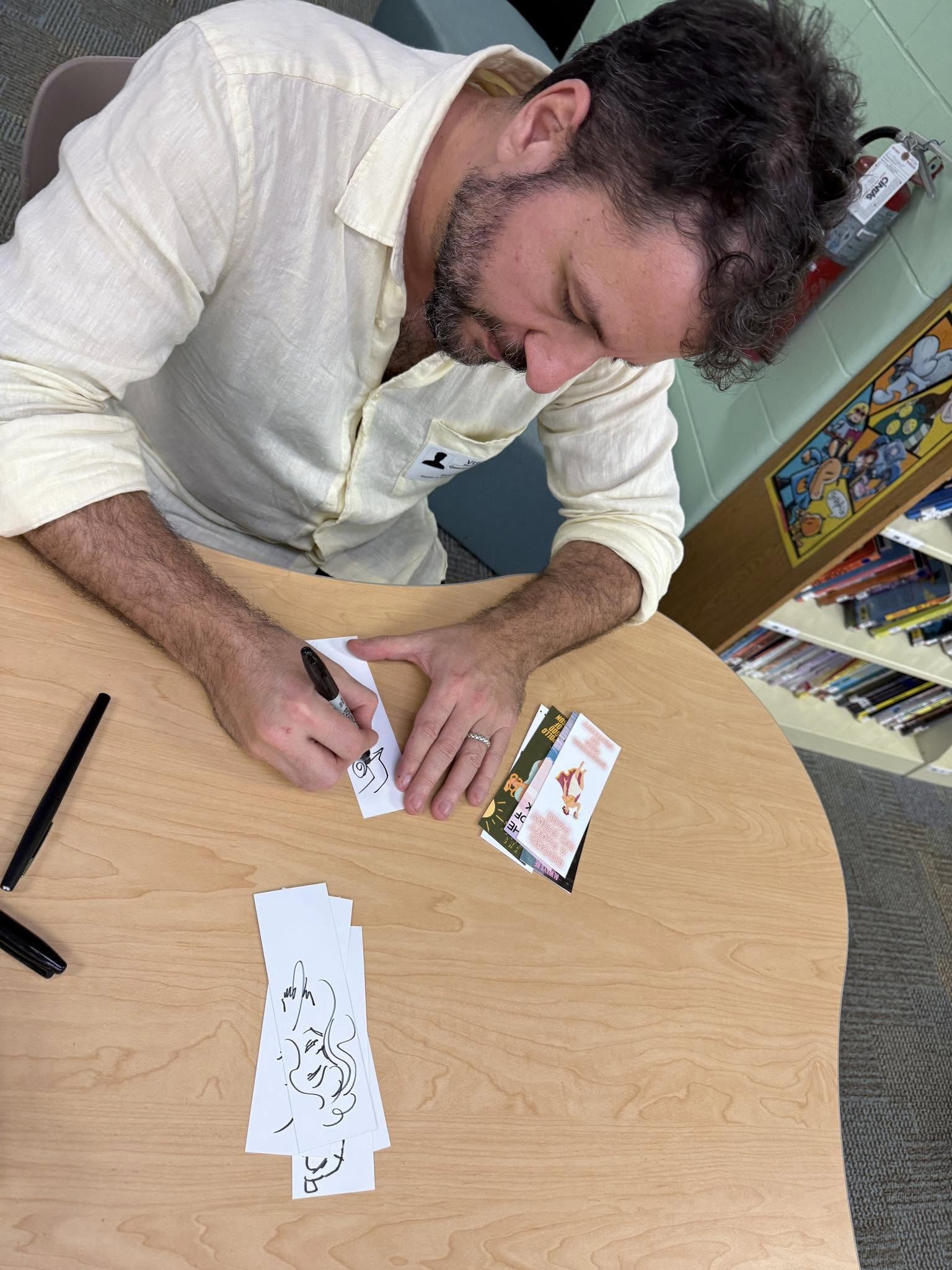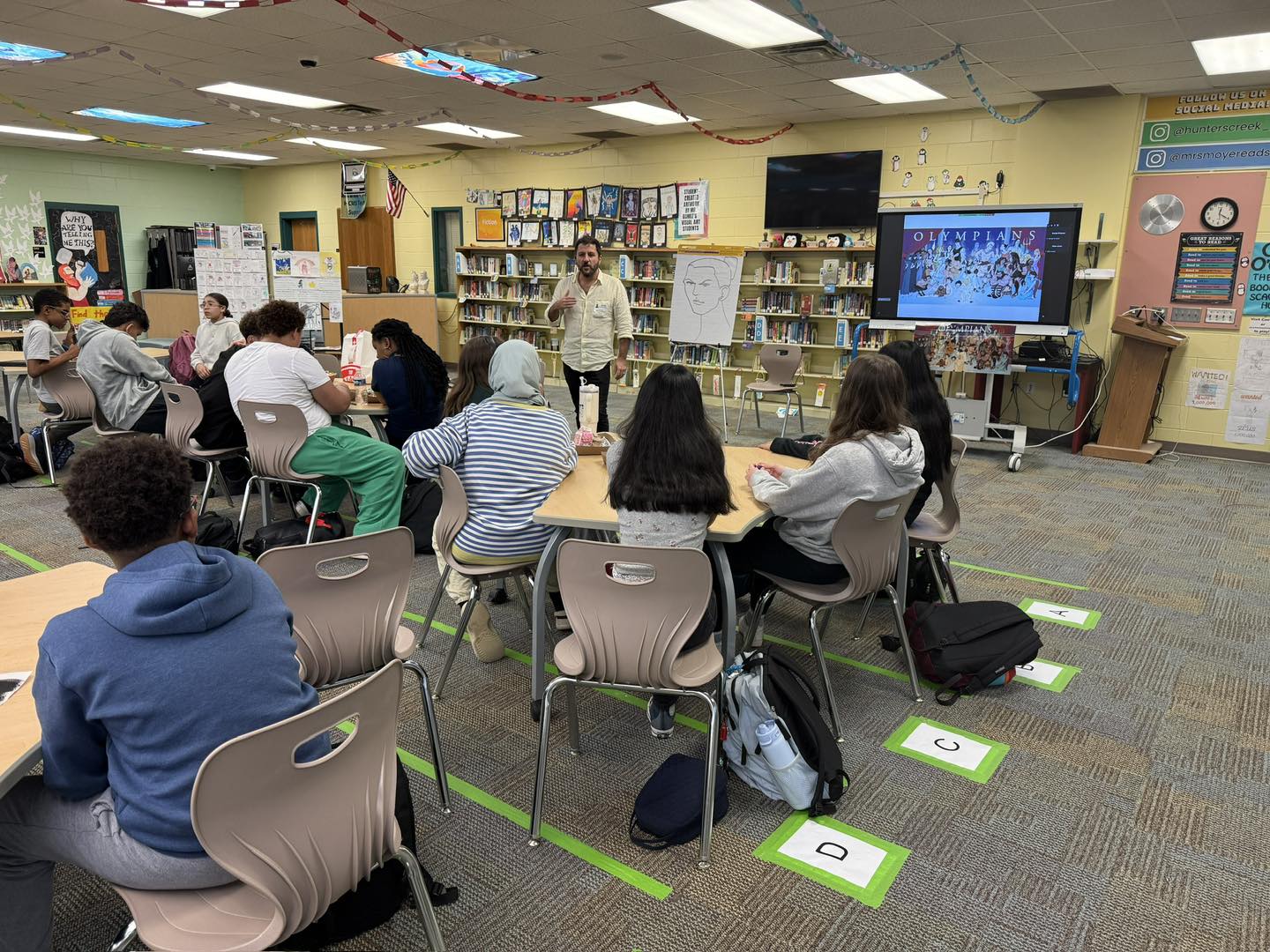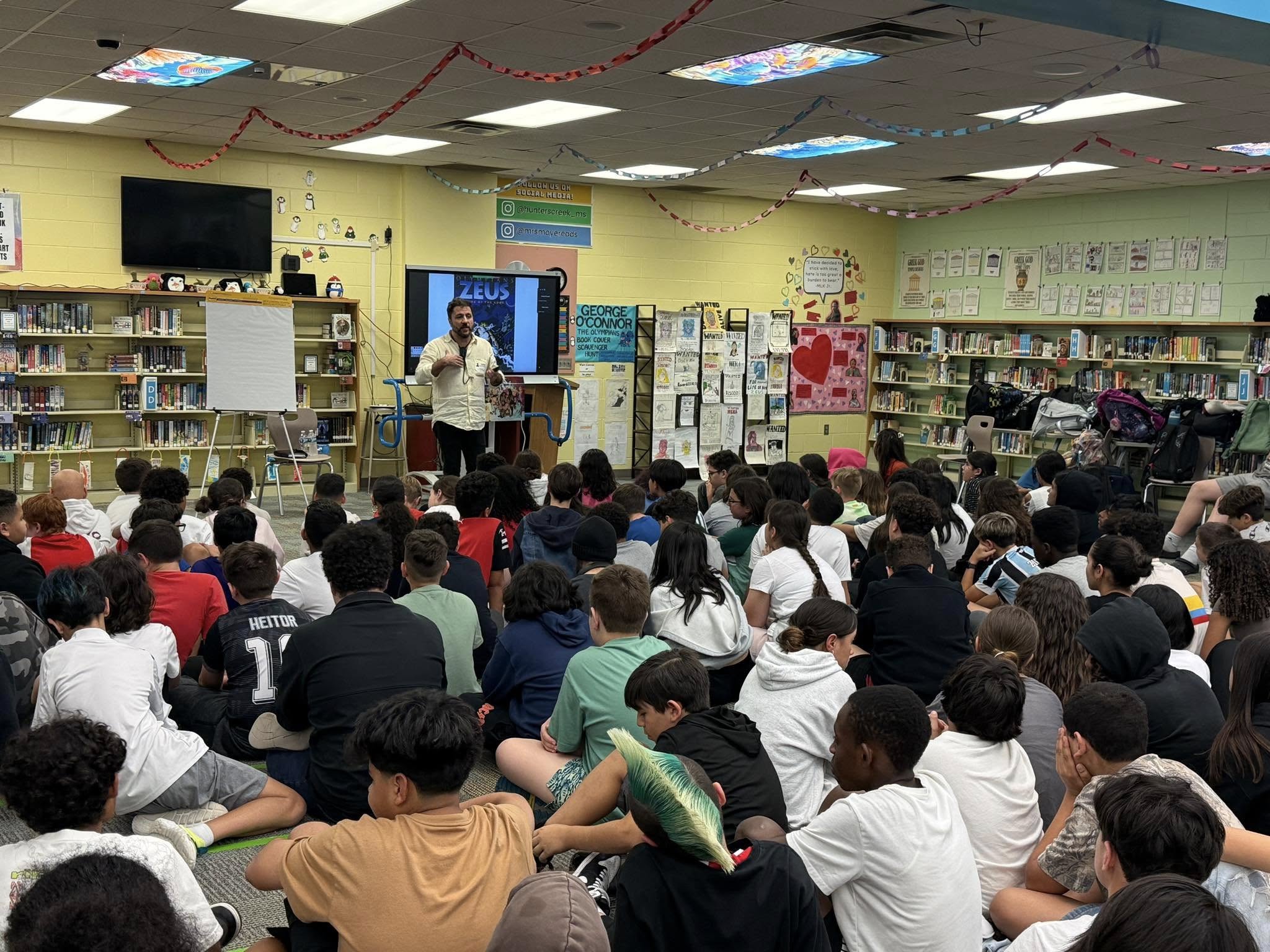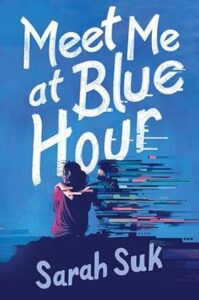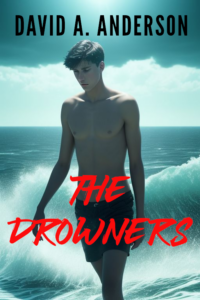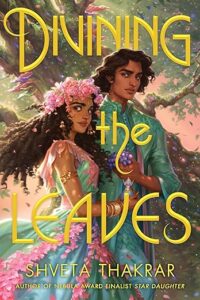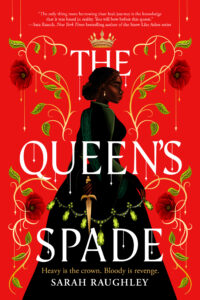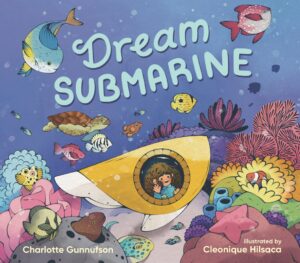“The Girl Who Gets the Girl”
When the idea for If We Were a Movie was first presented to me, it was a rivals-to-lovers story between a boy and a girl. I loved the idea but immediately knew I wanted to tell a sapphic love story, i.e. a rivals-to-lovers story between a girl and another girl. Later, when I’d written various versions of the book and I knew it was going to be published my mom asked me, “What made you decide to make this a love story between two girls?”
I am queer. If I was to put a more specific label on myself, I’d say I’m bisexual. I believe I have always been this way, but I didn’t realize it until around 2019 when I met someone who was not a cisgender guy and started crushing on them. Hard. But even though I’d made this discovery about myself it still took me some time before I was able to say it out loud. Whether it was internalized homophobia or a general shame about my identity, I found it difficult to find the words.
But writing a story about two girls falling for each other? That was easy.
In If We Were a Movie, the main character Rochelle, and her love interest, Amira, are fully out and proud, and their group of friends include a number of LGBTQIA+ identifying people as well. There isn’t a coming out story, not because I don’t think we still need those stories (we do!) but because I wanted to give Rochelle and Amira something I didn’t have at their age and I know, unfortunately, a lot of kids don’t have now. For Rochelle and Amira, being queer is simply a part of them amongst so many other facets of who they are. It is a part of their identity that is known and never questioned by themselves, each other, or anyone else.
When I first started writing If We Were a Movie, way back in 2022, I was writing it for me. It was healing for me to write a character who was so authentically herself and who lived in a world where being queer was just as accepted and understood as being straight. But now when I think about my mom’s question and why I wrote this story it’s a bit more than that. I knew writing a queer love story full of joy was what I needed at the time, but I also knew there was going to be a reader out there like me who was still struggling to accept themselves.
For me, reading books like Red, White, and Royal Blue by Casey McQuiston and You Should See Me in a Crown by Leah Johnson, helped me understand and accept that my feelings were not only normal but should be celebrated. They were mirrors for me to see myself in a way I didn’t think was possible for me before. And that’s what I hope If We Were a Movie is for someone else. Because while romances between a boy and a girl are great, there are plenty of those but still aren’t nearly enough about the girl who gets the girl of her dreams.
Now, there’s at least one more.
Publishing April 22nd, 2025 by HarperCollins

About the Book: Lights. Camera. Love? Rochelle “the Shell” Coleman is laser focused on only three things: becoming valedictorian, getting into Wharton, and, of course, taking down her annoyingly charismatic nemesis and only academic competition, Amira Rodriguez. However, despite her stellar grades, Rochelle’s college application is missing that extra special something: a job.
When Rochelle gets an opportunity to work at Horizon Cinemas, the beloved Black-owned movie theater, she begrudgingly jumps at the chance to boost her chances at getting into her dream school. There’s only one problem: Amira works there… and is also her boss.
Rochelle feels that working with Amira is its own kind of horror movie, but as the two begin working closely together, Rochelle starts to see Amira in a new light, one that may have her beginning to actually… like her? But Horizon’s in trouble, and when mysterious things begin happening that make Horizon’s chances of staying open slimmer, it’s up to the employees to solve the mystery before it’s too late, but will love also find its way into the spotlight?
About the Author: Zakiya N. Jamal was born in Queens, raised in Long Island, and currently resides in Brooklyn. In other words, she’s a New Yorker through and through. She holds a BA in English from Georgetown University and a MFA in Creative Writing with a concentration in Writing for Children and Young Adults from The New School. Her debut novel If We Were a Movie will be published in 2025 by HarperTeen. You can find her on social media at @ZakiyaNJamal.
Thank you, Zakiya, for sharing your inspiration and writing this “one more” that so many readers will love!
